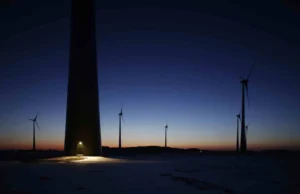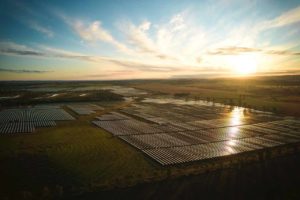The state government has rushed to allay fears in the wake of news that Hazelwood power station is likely to close as early as April, a move that could cost the Latrobe Valley up to 1000 jobs.
The Age reported a meeting of the station’s French owner, energy giant Engie, to be held next month would almost certainly decide to close the nation’s dirtiest coal-fired power station. Subsequently Energy Minister Lily D’Ambrosio called the owner for reassurance and was sent to the valley on Saturday to talk with nervous locals. The Age, Sunday 25 September.
This is fantastic news in most respects, BUT because the process is occurring in such an unstructured way it’s likely to result in significant rises in electricity prices for consumers, maybe $20/MWh on wholesale prices, or 8% on retail bills. And it will reduce the amount of surplus capacity in the market.
Hazelwood is the second largest plant in Victoria
Demand in Victoria is 45 Twh for the 12 months ended August 2016. Total electricity production in Victoria is about 53 TWh of which Hazelwood was just over 10.
Victoria has bidirectional links with South Australia, NSW and Tasmania but on a net basis the surplus generation is mostly exported to South Australia and NSW. In the first instance closure of Hazelwood with no other changes would lead to Victoria becoming a net importer by about 2 TWh.

There is little or no spare capacity in Victoria or South Australia
Loy Yang A might be able to increase output by about 2 TWh per year. Of course to do that it will need to keep the labour force on side. One of the ironies of this is that employees at LYA are on an extremely good wicket. Alinta CEO Jeff Dimery stated at the recent Informa/Reneweconomy conference that LYA employees could be on $180,000 for a 4 day week.
Those employees are not rushing to sign a new EBA even as their “mates” at Hazelwood face the chop. Because demand and supply will be so much tighter post this closure the entire labour force in the generation industry will have more bargaining power but that may be offset by the greater pool of surplus labour.
The only region capable of lifting output over 2017 and 2018 is NSW. NSW demand is 70 TWh and it currently is a net importer. Production from the main coal stations is a shade under 60TWh. We don’t see NSW gas or Snowy Hydro as being able to substantially lift output. In fact next year Snowy output may well be down.

NSW could perhaps lift output by 5Twh. However, in our view that would be a struggle, would put pressure on NSW thermal coal prices, and will leave some vulnerability to supply outage. Insurance premiums (CAP prices) would likely rise quite materially.
Don’t forget that there is still a further rise in demand to come in QLD.
Closure will lead to significantly higher prices in short term
The closure of Hazelwood will make apparent the true cost of the Abbott Govt’s anti climate change policies and anti renewable energy policies Those policies have changed now, but they resulted in very little renewable energy being built for a couple of years. Also they meant that there was no sensible long term planning about the inevitable transition to a low (zero) carbon future. This was a complete disgrace but its also irrelevant in that the problem is to manage the transition now.
Its been obvious indeed we have been writing about this for a couple of years, and your correspondent is self evidently no genius, that coal plants black or brown are individually “big lumps” of generation. Every time one is taken out of service demand increases relative to supply, raising prices.
Over the past three years we have seen Wallerawang (about 5% of NSW generation), Northern Power, Anglesea and Morwell all cease operations. In QLD Collinsville has gone. That’s just on the coal side. On the gas side Pelican Point has been mothballed at times and Swanbank E are not running, and Darling Downs is slated to run much less.
Notwithstanding the closure of two aluminum smelters it is just nutty to assume that this wont have an impact on prices. It’s great for the environment of course, and just what Australia needs but it is an unmanaged process. No thought or process exists to make sure there is enough supply to replace the closing power stations.
How much of a price rise? $20/MWh including cap price increases would not surprise at all.
Neither futures nor pool prices are driven by cost. They are driven by the balance between supply and demand. Suppliers will charge whatever the market will bear. That is the nature of a market economy and three cheers for that. In this case suppliers will see that new generation can’t be built within a two year time period.
They will almost certainly see that all the good things like lower renewables costs, storage, carbon prices mean that there is a limited medium term future for thermal generation. Therefore, they won’t care that higher short run prices will induce new supply. New supply is going to come anyway.
In South Australia we saw that the closure of Northern Power Station (3 TWh of output, 25% of South Australia demand) has contributed to a $20 MWh rise in FY18 base load futures.
Because of the cumulative impacts of Wallerawang, Northern, and Hazelwood and depending on the Portland smelter outcome we think that the closure of Hazelwood could add another $20 MWh to futures prices in NSW Vic and South Australia, or about 8% of household retail prices, more in percentage terms for large industrial users. That $20 MWh is just a guess but would be made up partly as an increase in baseload futures but also a lift in the insurance cost (prices for $300 MWh caps) because the volatility of prices and the risk of supply outages and their impact will also increase significantly.
Futures prices in NSW and Victoria are already up $10 MWh from levels earlier in the year but we think an April 2017 closure of Hazelwood has not really been factored in at all.

Portland very likely to close if Hazelwood goes
Portland smelter made virtually zero ebitda last quarter even with a very heavily subsidized electricity price. The electricity prices is going to rise very substantially in November. Barring what will be a very expensive and ultimately unsustainable subsidy from the Victorian Government, Portland’s financial future is grim. It has no natural competitive advantage. Whatever the way forward for Victorian manufacturing is, it probably doesn’t involve aluminium smelting.
Closure of Portland and Hazelwood would mean that the net reduction in supply falls from 10 TWh to 5Twh. In ITK’s view this is more manageable in the short run although it will still result in rises in electricity prices in every State.
In the unlikely event ITK was advising Federal, State Govts
Our recommendations would include:
- Ensure Pelican Point has enough gas and is incentivized to keep running through to the end of 2019 at least.
- Negotiate for Hazelwood to be phased out over two years. This is extremely painful from a carbon perspective but will mean less consumer price shock and less room for coal supporters to say “I told you so”. It will also allow the futures market to adjust and indeed give Engie time to exit some market positions more smoothly. The Victorian Govt. could subsidise some part of the up to $0.5 bn of closure costs (labour retrenchment, environmental costs and exiting of futures positions) in return for a more gradual closure. Since Hazelwood consists of 8 individual units its particularly well suited to a gradual transition.
- Accelerate further the Victorian 40% renewable target to ensure new renewable supply is operating within two years. Wind farms like the 450 MW Stockyard Hill are ready to go. PV can be built within two years. However…
- More wind and PV will not be all of the answer. Storage, or other “on demand” renewable supply is also required. Federal Govt policy would be of great help here. Some subsidies for storage could greatly accelerate both household and utility storage. In ITK’s world these would be paid for by a carbon tax, but the money may have to come from electricity consumers if a carbon tax is not possible. Either a carbon tax or raising the cost of electricity will emphasize energy efficiency and encourage more distributed generation both of which will help to manage reduced, centralized thermal generation.
- Accelerate further the new transmission link from NSW to South Australia and consider a second transmission link to Tasmania. The reason for putting these links in would be to enable more wind farms to be built.
- Incentivise networks to accelerated micro grids all around the edges of their networks. Thin pipes with more small scale generation and storage at the edge of the network is the model of the future.
All that said challenges remain
The challenge to all of us, already made obvious by South Australia, and about to become a significantly bigger issue with the closure of Hazelwood is to show that renewable supply can be used to deliver reliable base load power so that aluminum smelters don’t have to close. Here at ITK we have no doubt whatsoever that this can be achieved at manageable cost but there is now a real market need to get this done in practice. Engineers, your time starts now.
David Leitch is principal of ITK. He was formerly a Utility Analyst for leading investment banks over the past 30 years. The views expressed are his own. Please note our new section, Energy Markets, which will include analysis from Leitch on the energy markets and broader energy issues. And also note our live generation widget, and the APVI solar contribution.












